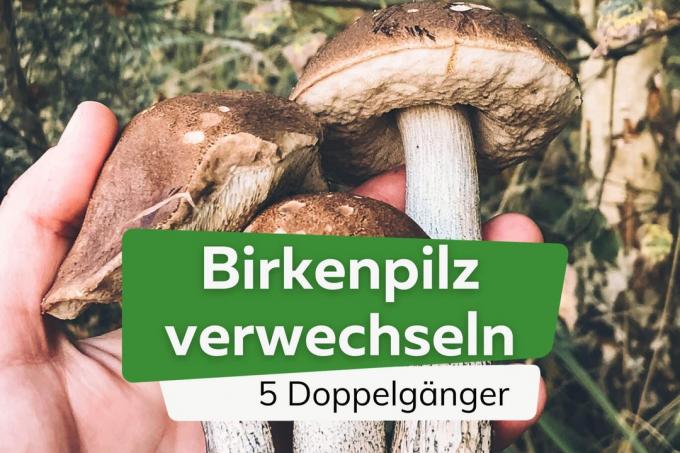
With a bit of luck you can find tasty birch mushrooms near Birken between the end of June and October. Is there a risk of confusing birch mushrooms with poisonous doubles?
In a nutshell
- Birch mushrooms always near birches
- colored differently depending on location
- resemble other rough-legged boletes
- no risk of confusion with toadstools
Table of contents
- Identify birch fungus
- Is there a risk of confusion?
- frequently asked Questions
Identify birch fungus
The mean birch mushroom (Leccinum scabrum) is one of the early species, because already at the end of June you can track it down in sparse forests as well as in gardens and parks. He always grows near birches. How to recognize birch mushrooms and avoid confusion:
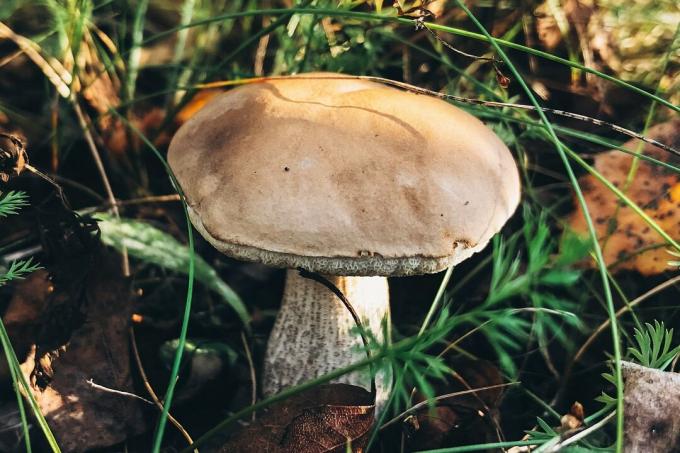
| cap | stalk | Meat |
|---|---|---|
| - 5 to 15 centimeters (cm) in diameter – hemispherical – light or dark grey, grey-brown, partly reddish-grey colored - smooth surface – greasy in damp weather – Tubes easily detachable from the hat flesh |
– 8 to 15 cm long – about 2 cm thick - white – Covered with small black scales - full – tapered towards the top |
– first white, later grey – Cap flesh of young specimens firm – Smell pleasant – Flesh of older birch mushrooms soft and spongy – stem meat fibrous, woody |
A notice: Collect only the young birch mushrooms. Older specimens are no longer as tasty.
Is there a risk of confusion?
The common birch mushroom can easily be confused with other rough-legs. There is no danger because all rough feet are edible. So there are no toxic doubles. Nevertheless, there is a "threat" of confusing the birch mushroom with these mushrooms:
A notice: Under no circumstances should you eat mushrooms raw. Even good edible mushrooms are often poisonous when not cooked. The birch mushroom and other boletus are also inedible raw. They must be braised for at least 15 minutes before consumption.
1. Poplar Roughfoot (Leccinum duriusculum)
The rare poplar boletus appears much later than the birch mushroom. It can only be found near trembling poplars.
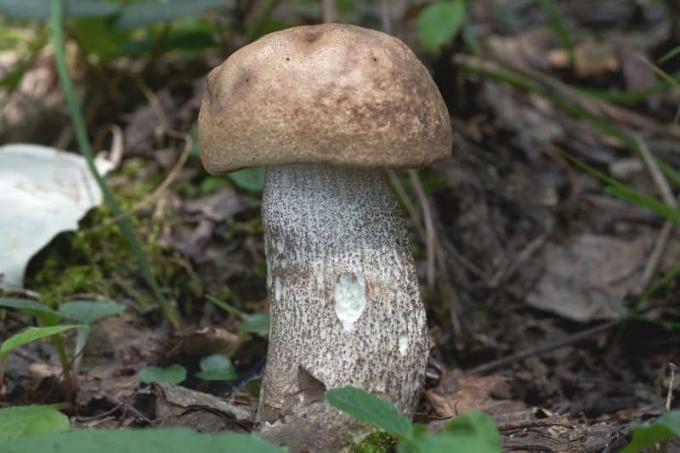
| Happen | characteristics | Value |
|---|---|---|
| Parks, gardens, under hedges and bushes | wrinkled brown hat surface Stem with brown scales |
good edible mushroom |
2. Hornbeam Roughfoot (Leccinellum pseudoscabrum)
Hornbeam Roughfoot is a valuable mycorrhizal fungus. He lives in symbiosis with the hornbeam.
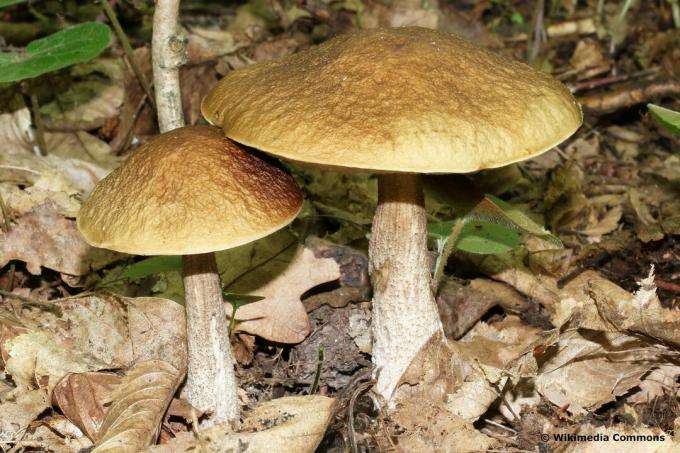
| Happen | characteristics | Value |
|---|---|---|
| Garden, parks, beech forests | wrinkled caramel colored hat gray to olive-grey tubes After cutting, the meat first turns grey-violet, then black |
excellent edible mushroom |
A notice: The hornbeam roughneck is a nature reserve and may only be collected in small quantities for personal use.
3. Birch Red Cap (Leccinum versipelle)
The birch red cap grows especially near silver birches. When it is humid and warm early in summer, mass occurrences are possible. Usually, however, the birch red cap is quite rare.
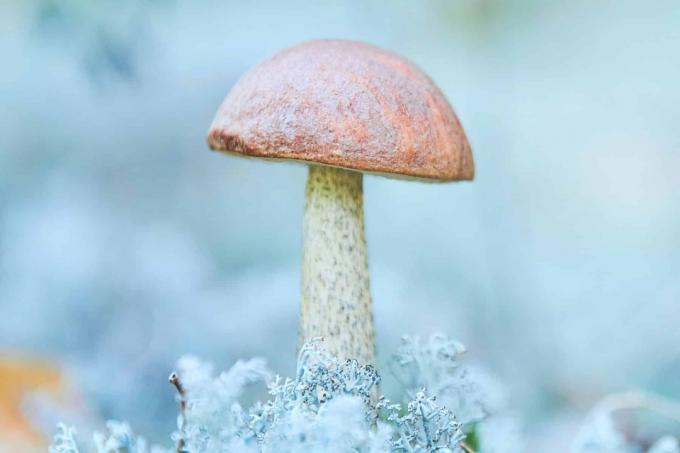
| Happen | characteristics | Value |
|---|---|---|
| on acidic soils near birches |
reddish-brown colored cap black mottled stem turns black when cut |
good edible mushroom rarely maggot |
4. Blue-footed roughneck (Leccinum cyaneobasileucum)
Also known as Woolly Roughfoot, the fungus grows near birch trees. Its flesh turns dark brown when cut.
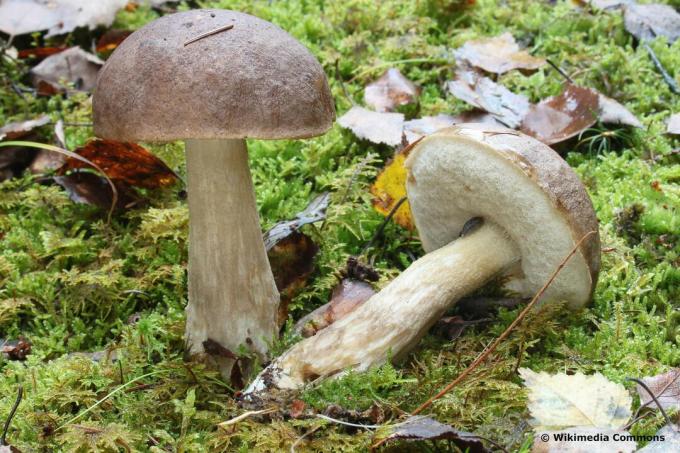
| Happen | characteristics | Value |
|---|---|---|
| on moist to humus rich soil | greyish hat with rolled brim Stem with a woolly surface |
edible mushroom |
5. Cigar Roughfoot (Leccinum roseofractum)
Extremely rare is the cigar brown rough-leg, also known as the pink birch fungus. Its flesh takes on a striking coral red color when cut.
| Happen | characteristics | Value |
|---|---|---|
| near birches | dark gray to tobacco brown cap yellowish stem with black scales |
edible avoid older copies |
frequently asked Questions
The birch mushroom can be boiled or stewed. Birch mushrooms smell pleasant, they taste mild and slightly sour. Use young specimens if possible. The older the birch mushroom is, the slimier its consistency becomes when heated. Those who do not like this can dry the birch mushroom perfectly. The stalks of older birch mushrooms should not be processed, they are very woody.
The term "mycorrhiza" comes from the Greek and means something like "fungus root". The mycorrhiza is a root colonized by a fungus. The fungus envelops the young roots of a tree with its fine mycelium and creates a connection. While the tree gives off sugar as a product of its photosynthesis to the fungus, the latter supplies the tree with important nutrients such as nitrogen or phosphorus. Both benefit from this community.
Birch trees always form mycorrhizae, they live in symbiosis with numerous types of fungi. The most popular partners include all boletus mushrooms, toadstools, russula, veil mushrooms and knightlings.
Hardly possible. Growing mushrooms in your own garden is becoming increasingly popular, but growing forest mushrooms is very complicated. Mushrooms and oyster mushrooms, for example, are more suitable for self-cultivation. You can get the right mushroom spawn from specialist retailers.
